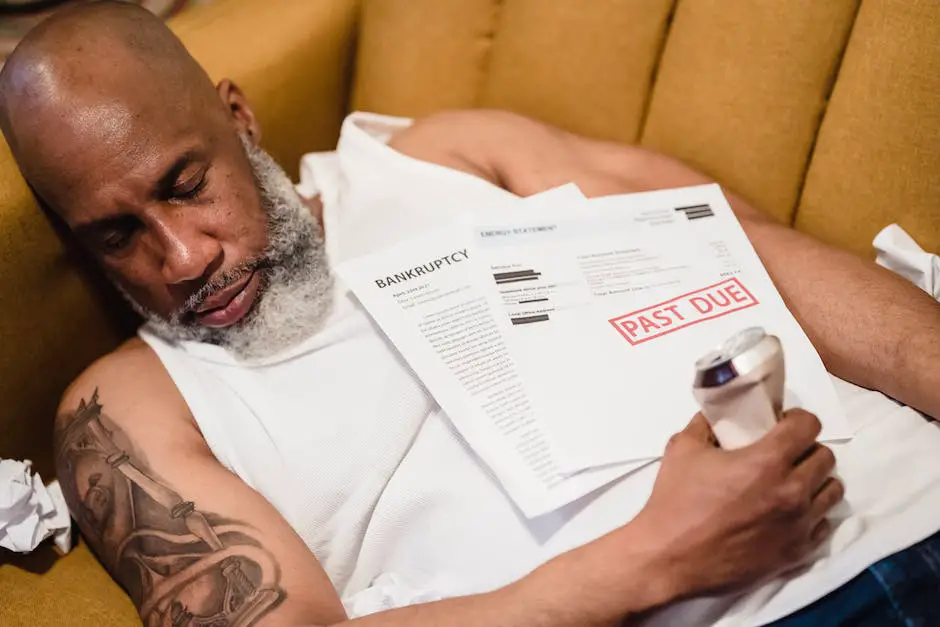With the cost of healthcare soaring to new heights, and medical bills gradually becoming a substantial financial burden for many Americans, understanding the reasons behind these hefty bills has become increasingly important. It is not uncommon for many of us to face confusion while reading medical bills or to find ourselves unable to foot these bills without straining our resources. In this essay, we will delve deeper into the intricacies of medical billing, exploring why they are typically so high, the common excuses people offer for their unpaid bills, and potential strategies that individuals can use to address these payments. We will unravel the economic factors influencing these costs, including the high costs of medical technology and training, expensive drugs and treatments, and healthcare professional wages. We’ll also shed light on the complexities that often result in misunderstandings in the billing process. Finally, we will provide possible solutions to this prevalent issue, from negotiating bills to setting up payment plans and more.
Reasons behind High Medical Bills
High Cost Medical Technology and Research
The advent of cutting-edge medical technology and innovative research is a significant player in determining healthcare costs. Advanced technology used in diagnostic tests, surgeries, and treatments often comes with a hefty price tag. The factors contributing to the high cost include the research and development expenses, the intricacy of the devices, and the need for specialized training to operate them. When the cost of maintaining, handling, and utilizing these sophisticated tools is centralized, it directly impacts the medical bills consumers are presented.
Expensive Drugs and Treatments
Pharmaceutical expenses are another substantial factor in the high medical bills narrative. The high cost of prescription drugs in the U.S. is determined by various factors, such as drug development, marketing, and pricing strategies, patents policy, and federal regulations. Additionally, complex treatments, such as chemotherapy, surgeries, transplants, result in higher medical bills due to the significant inputs of time, resources, and expertise they require.
Hospital Care Costs
Hospital care costs are undoubtedly among the significant contributors to high medical bills. Expenses linked with hospital care involve nursing and residential care, hospital stay, surgeries, as well as emergency department services. Economical and operational factors including overhead costs, underfunding, and high demand for services often lead to an increase in the cost of hospital care.
Price of Medical Training and Salaries
Another understated yet vital factor is the high cost of medical training. The education and training to become a healthcare professional consist of long years of rigorous, expensive education, and hands-on training. This investment is reflected in the wages that these professionals earn. Since these wages form a significant part of operational costs for hospitals and clinics, they impact the pricing models of these places, which in return affects the patients’ medical bills.
Insurance and Administrative Costs
Various insurance factors, such as out-of-network charges, uncovered services, deductibles, and copayments, can significantly increase a patient’s bill. Additionally, the administrative costs of running healthcare facilities and the complexities surrounding health insurance claims processing also factor into the final bill patients are given.
Pricing Inconsistencies
Regulatory gaps and lack of price transparency often allow healthcare providers to charge differing amounts for the same service. The lack of consistent pricing standards can result in increased medical bills for patients, even for basic services.
It is essential to grasp why medical bills can often be high to better manage and understand them. However, the factors influencing these hefty charges might vary for everyone due to individual circumstances. Hence, it is an absolute must to thoroughly check all medical bills for unfamiliar or incorrect expenses.

Photo by drew_hays on Unsplash
Frequent Excuses for Unpaid Medical Bills
Decoding Unpaid Medical Bills: Interactions between Financial Limitations and Intricate Administration
A significant number of Americans wrestle with unpaid medical bills. This concern primarily stems from both the financial hurdles people face and the complexities ingrained in the healthcare billing system. Being aware of the most common reasons for this problem can provide a comprehensive understanding of this widespread issue.
Financial Limitations and Inability to Pay
One of the most common reasons people fail to pay medical bills is financial hardship. With healthcare costs continuously skyrocketing, many patients find themselves unable to afford the out-of-pocket expenses required for their treatment. The high costs of hospital stays, surgeries, drugs, or out-patient procedures can easily drain a patient’s resources, leaving them unable to fully settle their bills. For such individuals, prioritizing other non-negotiable expenses like housing and food over medical bills is a practical survival strategy.
Confusion Over the Billing Process
Additionally, the medical billing process is notoriously intricate, often leading to misunderstandings and unpaid bills. Patients may receive multiple bills for the same medical procedure, each from different healthcare providers, leading to confusion about what exactly they are being billed for. Others may not understand the coding and terminology used in billing, making it difficult for them to navigate the payment process.
Insurance Coverage Discrepancies
Insurance coverage complexities and disagreements about responsibility for certain medical expenses further compound the issue. For example, a patient may believe that an insurance policy covers a particular service, only to later find that the claim has been denied. The insurance company’s coverage details or policy changes may not have been clearly communicated to the patient, resulting in unexpected out-of-pocket expenses.
In other cases, the insurance might cover a certain percentage of the total cost, leaving the patient responsible for the rest. Misunderstanding about deductible payments, co-payments, and co-insurances also contribute to insurance-related excuses for unpaid medical bills.
Bureaucratic Errors Leading to Non-Payment
There are also instances where bureaucratic errors or oversights lead to non-payment. These could include mistaken patient identification, incorrect service date entries, invalid procedure or diagnosis codes, or wrong insurance information. Patients may not pay their bills if they believe there are errors or inaccuracies.
Healthcare Provider-Patient Miscommunication
Miscommunication between healthcare providers and patients is another driver of unpaid medical bills. Patients who do not understand their payment responsibility due to ineffective communication are more likely to not settle their bills. For instance, a doctor may fail to communicate the full extent of a patient’s financial obligation consciously or unethically, leading to a nasty surprise when the bill comes.
A Comprehensive Approach to Unpaid Medical Bills
In light of the reasons highlighted above, it becomes unquestionable that a holistic solution is essential to tackle unpaid medical bills. This solution should not only assist patients in comprehending their financial liabilities but should also streamline the billing process. Additionally, the enhancement of health insurance coverage and fostering effective communication channels between patients and their healthcare providers should form part of these inclusive strategies.

Solutions and Strategies to Address Medical Bill Payment
The Significance of Deciphering Medical Billing Codes
One fundamental aspect of addressing medical bills involves gaining a proper understanding of medical billing codes, or Current Procedural Terminology (CPT codes) as they are commonly referred to. These five-digit codes are allocated by the American Medical Association to various medical, surgical, and diagnostic services provided by healthcare professionals. Familiarity with these codes enables you to identify potential inaccuracies or errors, such as being billed for services not provided. Upon discovering any irregularities, it is advisable to engage in a discussion with your healthcare provider or insurance company to challenge these charges.
Negotiating Medical Bills
Negotiation is another strategy to address unpaid or high medical bills. Almost all healthcare providers and hospitals have some room for negotiation on prices for services and procedures. Start the negotiation process by asking your healthcare provider or hospital’s billing department about discounts, especially if you can pay a large portion of the bill upfront. If negotiation is daunting, consider hiring a medical billing advocate. These are professionals who understand the healthcare industry’s intricate workings and can negotiate lower prices on your behalf.
Setting Up Payment Plans
Payment plans are another common solution for managing unpaid medical bills. Unlike loans or credit card debt, medical debt generally doesn’t accrue interest and can often be paid back over time without financial penalty. Many healthcare providers and hospitals offer interest-free payment plans, especially for individuals who are uninsured or financially strapped. However, remember to get any such agreement in writing to ensure all parties adhere to the agreed terms.
Financial Assistance Programs
Numerous institutions offer financial assistance programs to help individuals handle their medical expenses. These programs include government-sponsored initiatives such as Medicaid and the Children’s Health Insurance Program (CHIP), non-profit organizations, and community health clinics. Qualifications for these programs depend on various factors, including income, age, and health condition.
Dealing with Insurance Companies
Dealing with insurance companies can be challenging but necessary when addressing medical bill payments. Always communicate promptly and maintain records of all correspondence, including dates, names, and the matters discussed. Review your insurance policy carefully to understand what is covered and what isn’t, and always question decisions you believe are incorrect or unfair. You have the right to appeal a decision or claim denial, and insurance companies are obligated by law to explain the dispute process.
Maintaining Open Communication
Finally, it’s essential to maintain open communication with your healthcare provider, billing department, and insurance company. Keeping involved parties informed about your financial situation can lead to more flexible payment options or even debt forgiveness. Remember, providers are often more willing to assist patients who communicate proactively. And always confirm that you’re being charged the correct amount for the services you’ve received.
These are proactive strategies that can show good faith and intent and may ultimately help you manage overwhelming medical bills more effectively.

Healthcare is a basic human right, yet the struggle to afford medical bills often prevents people from seeking out the care they need. By understanding the complexities of medical billing and the reasons behind high costs, individuals can be better prepared to address this financial challenge. The road to affording healthcare may be riddled with hurdles – expensive treatments, confusing billing procedures, and the need for negotiation with healthcare providers. However, armed with the knowledge of initial steps to take, such as understanding medical bill codes, setting up a payment plan, or seeking financial assistance, it becomes somewhat easier to navigate those hurdles. The desire is that with these strategies, the seemingly insurmountable task of covering our medical expenses becomes a reality, bringing us one step closer to a world where healthcare is accessible to all, irrespective of their financial status.

Recent Comments